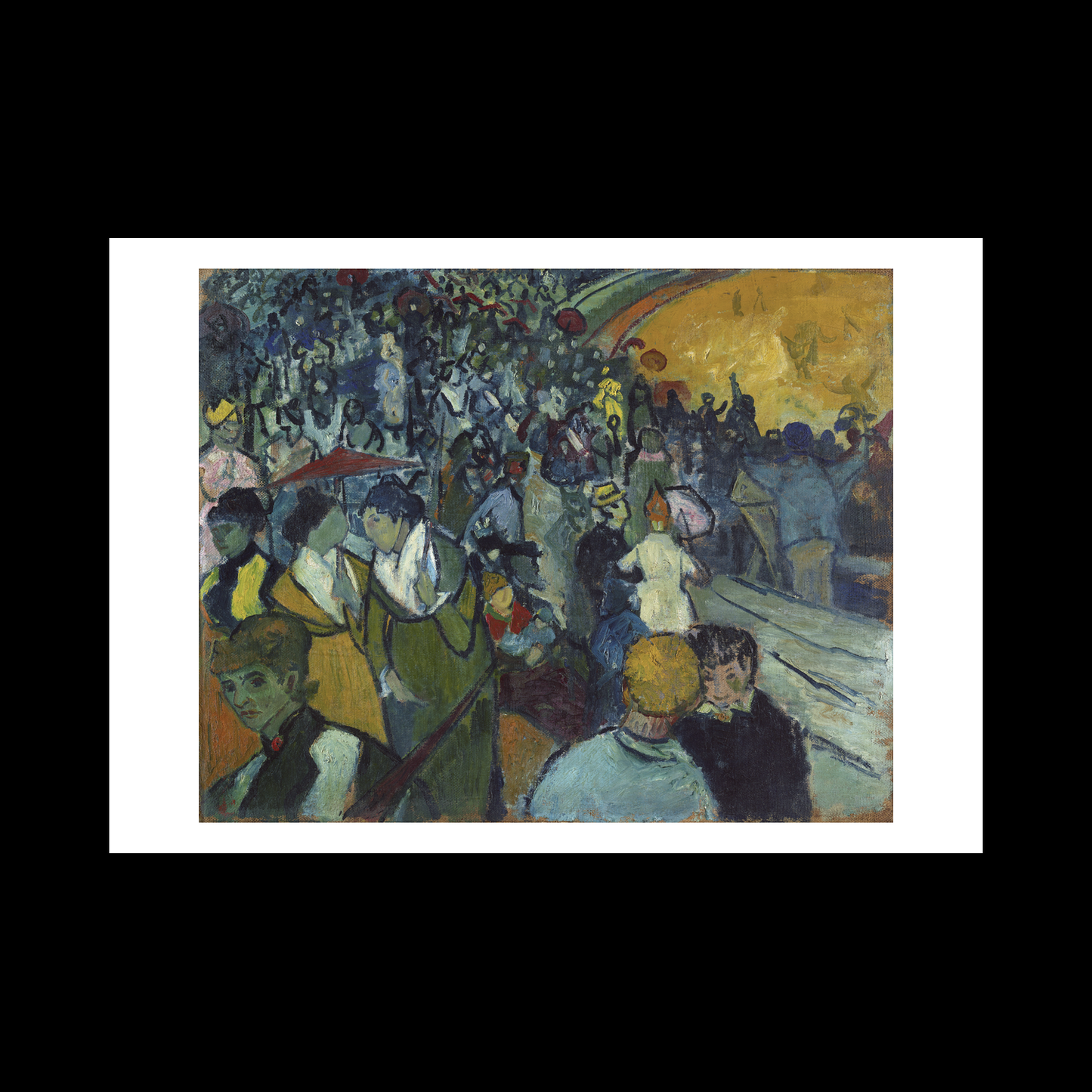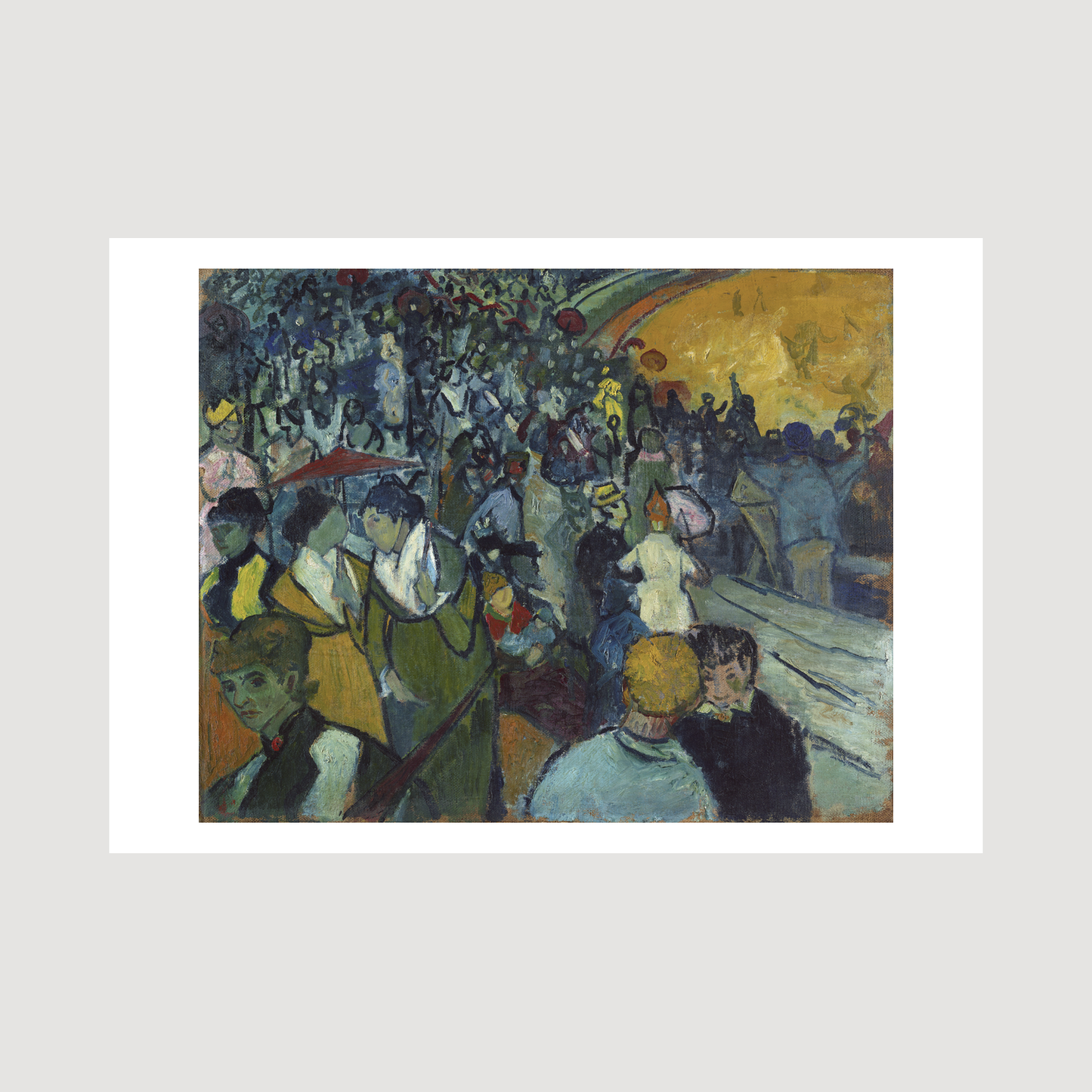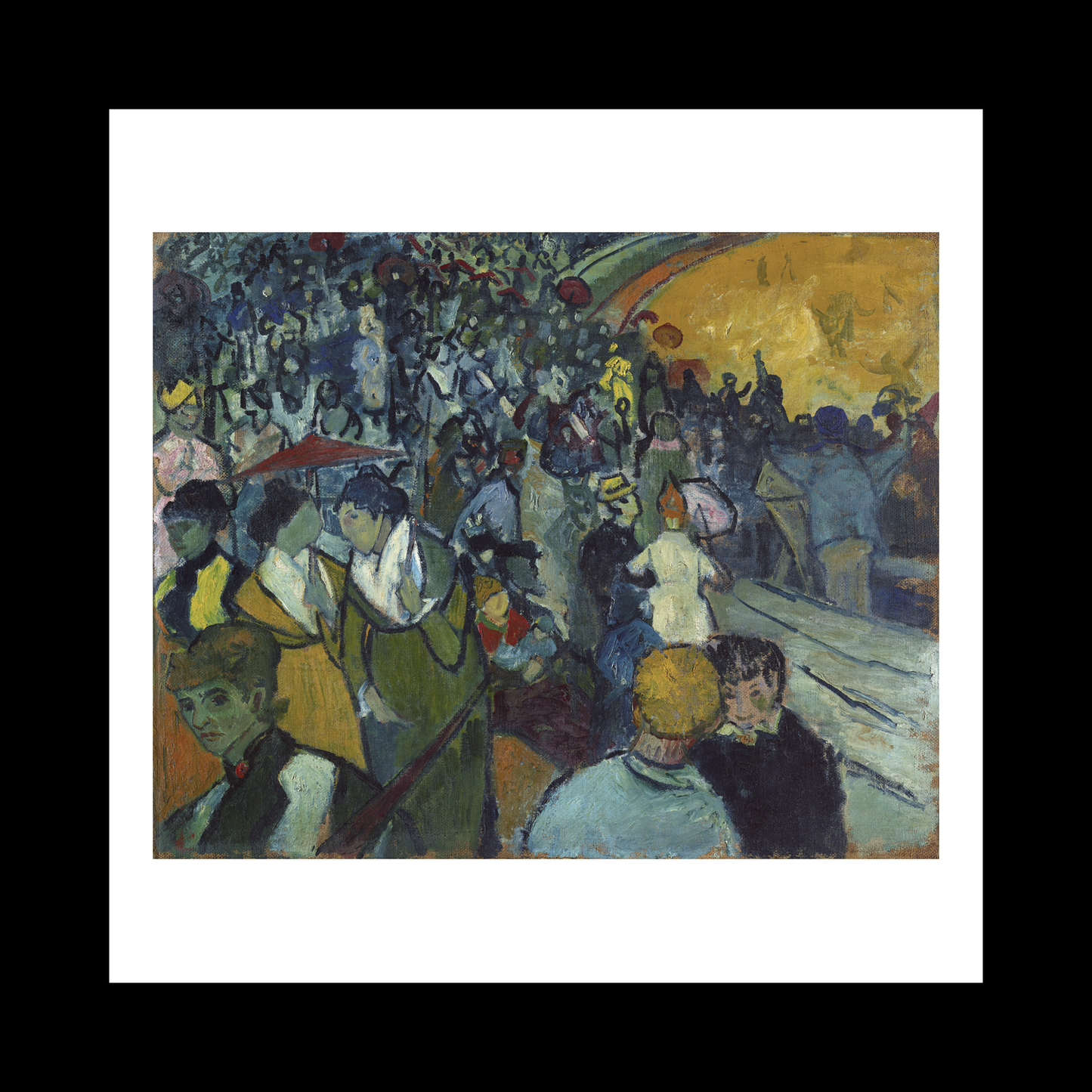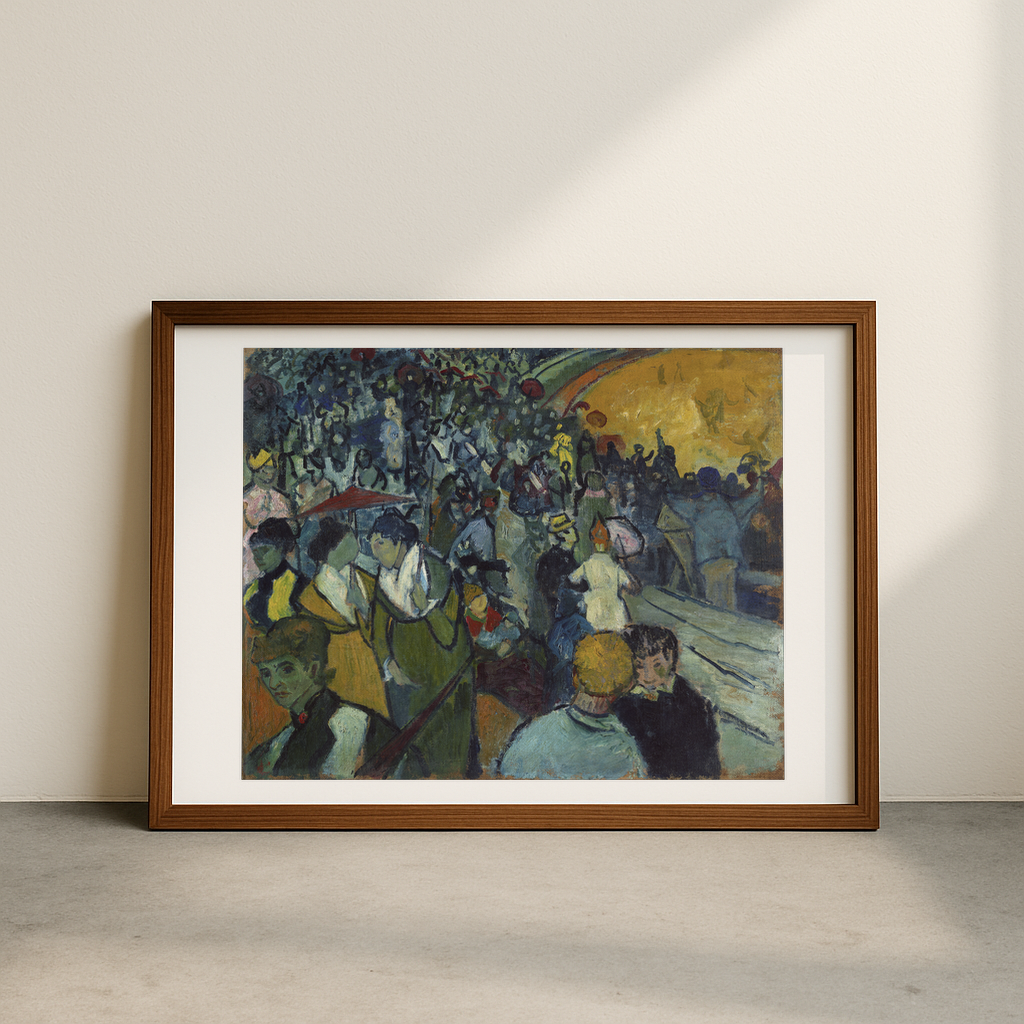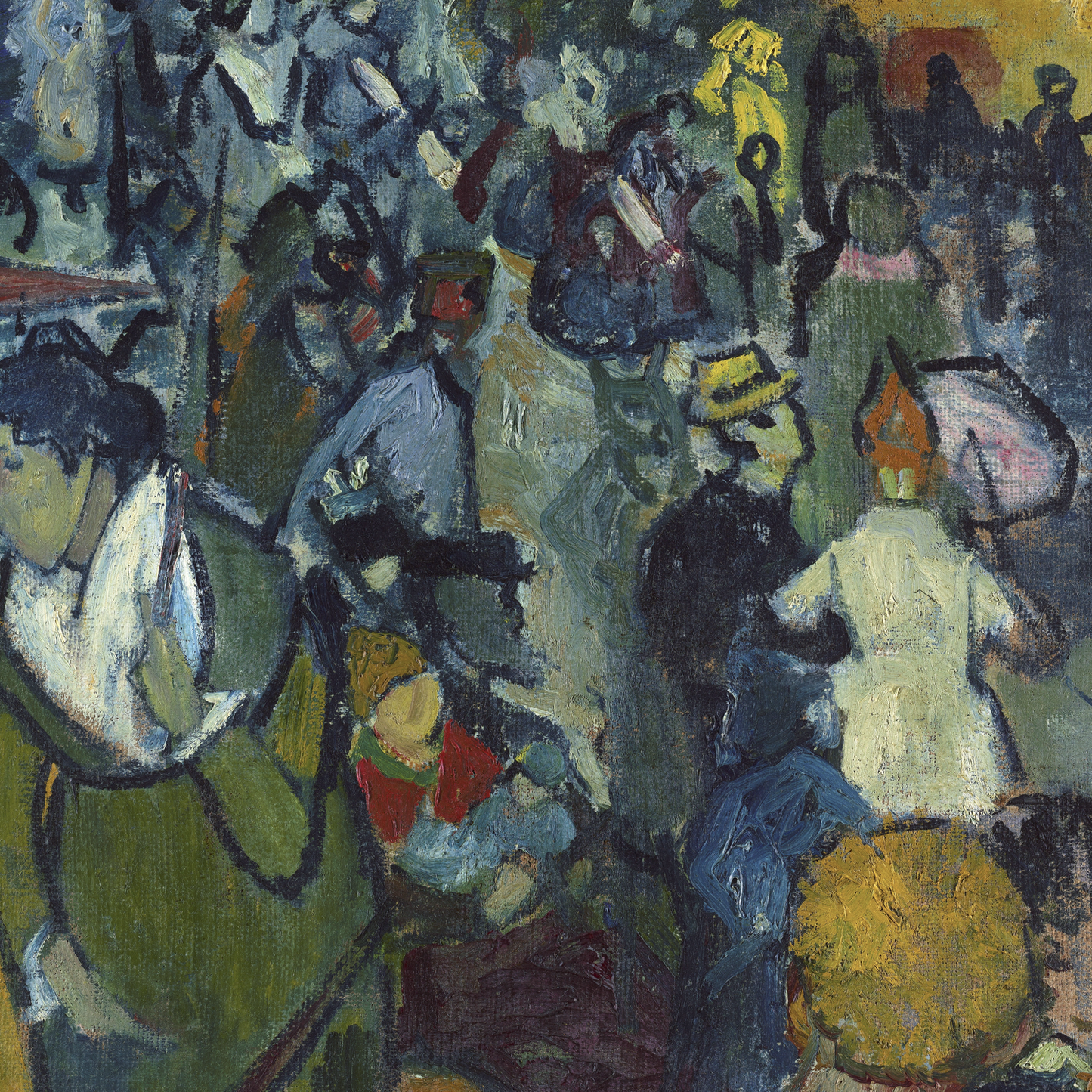1
/
of
6
Les Arènes
Les Arènes
Regular price
£12.45 GBP
Regular price
Sale price
£12.45 GBP
Taxes included.
Quantity
Couldn't load pickup availability
Les Arènes (1888) captures Van Gogh's distinctive interpretation of the Roman amphitheatre in Arles, France, rendered in his characteristic expressive style. The painting showcases his bold brushwork and unique perspective, with dynamic strokes creating a sense of movement across the ancient stone architecture. The artist's use of vibrant yellows and blues reflects the intense Provençal sunlight, while the structural elements are defined through strong outlines and contrasting shadows.
Created during Van Gogh's productive period in Arles, this work represents his fascination with the region's historical architecture and the quality of light in southern France. The amphitheatre, still standing today, particularly intrigued him as a symbol of enduring human creativity. He painted this scene shortly after arriving in Arles, during a time when he dreamed of establishing an artists' colony in the region - a dream that would later lead to his tumultuous relationship with Paul Gauguin.
The composition reveals Van Gogh's innovative approach to perspective, as he chose to depict the amphitheatre from an angle that emphasises its imposing circular structure. His technique of applying paint in distinct, visible strokes creates a textural quality that brings the ancient stones to life. The painting exemplifies his ability to infuse architectural subjects with emotional intensity, transforming a historical monument into a deeply personal vision of light, colour, and form. This work stands as a compelling example of how Van Gogh's unique artistic vision could transform everyday scenes into expressions of profound emotional and visual impact.
View full details
Created during Van Gogh's productive period in Arles, this work represents his fascination with the region's historical architecture and the quality of light in southern France. The amphitheatre, still standing today, particularly intrigued him as a symbol of enduring human creativity. He painted this scene shortly after arriving in Arles, during a time when he dreamed of establishing an artists' colony in the region - a dream that would later lead to his tumultuous relationship with Paul Gauguin.
The composition reveals Van Gogh's innovative approach to perspective, as he chose to depict the amphitheatre from an angle that emphasises its imposing circular structure. His technique of applying paint in distinct, visible strokes creates a textural quality that brings the ancient stones to life. The painting exemplifies his ability to infuse architectural subjects with emotional intensity, transforming a historical monument into a deeply personal vision of light, colour, and form. This work stands as a compelling example of how Van Gogh's unique artistic vision could transform everyday scenes into expressions of profound emotional and visual impact.
